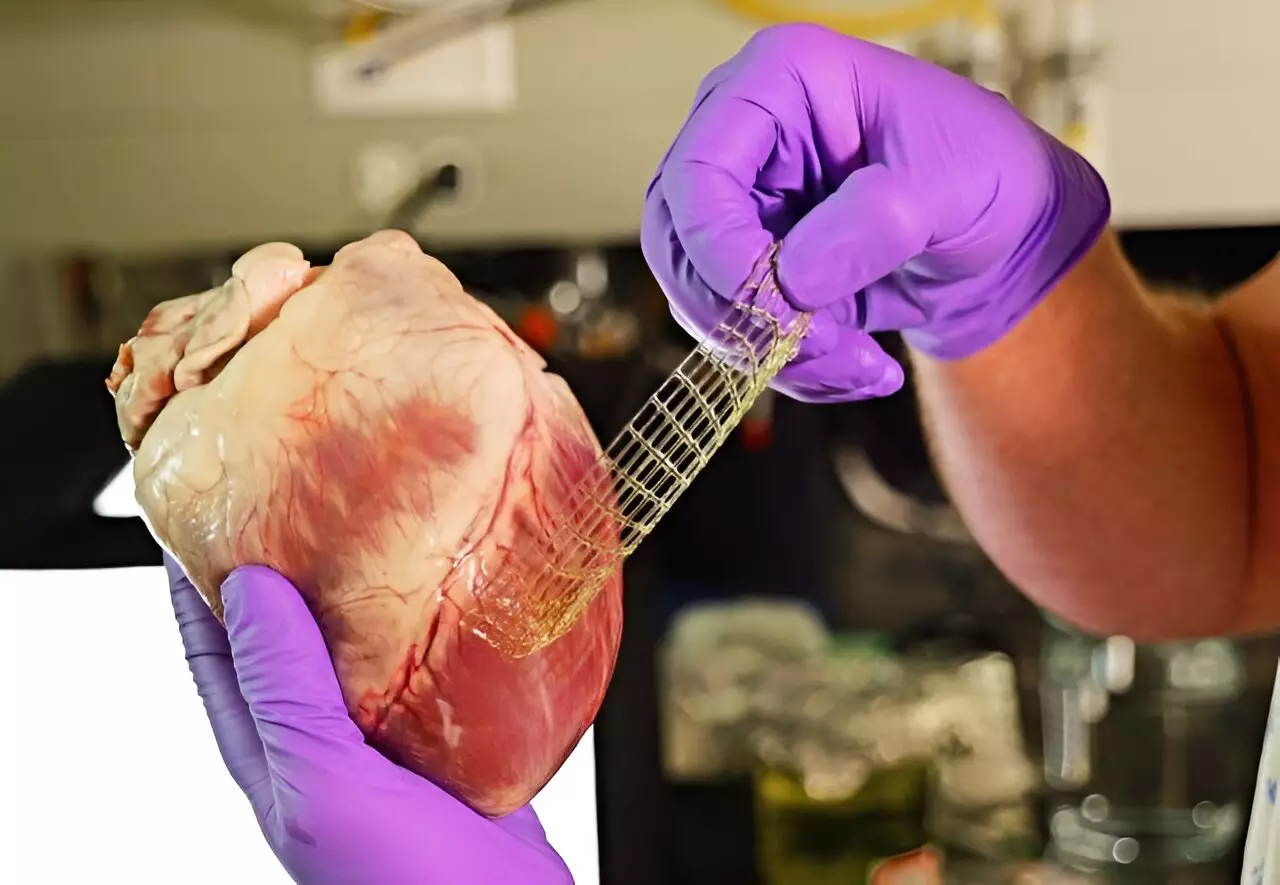In recent years, the field of biomedical engineering has seen significant advancements driven by the necessity to create materials that resemble human tissue both in functionality and versatility. As researchers explore ways to formulate biomaterials that can effectively replace or repair human body parts, they encounter an intricate problem: natural tissues are inherently both dynamic and diverse in their mechanical properties. A collaborative research endeavor spearheaded by the University of Colorado Boulder and the University of Pennsylvania has made remarkable progress in this domain. Their groundbreaking work involves a novel method of 3D printing that produces materials with the resilience needed for applications ranging from heart repair to cartilage restoration.
The quest for developing biomaterials that can effectively handle the demanding conditions of the human body is fraught with complications. Human tissues, particularly those found in the heart and cartilage, are known for their limited self-repair capabilities. Once injured, these tissues often do not recover, making the need for innovative solutions all the more urgent. Jason Burdick, a professor of chemical and biological engineering, emphasizes that advances in resilient materials could significantly enhance healing processes and ultimately improve patient outcomes.
Despite the potential applications of bioprinting, traditional methods for fabricating biomedical devices—primarily molding and casting—have been restrictive. These approaches lend themselves well to uniform product creation but lack the flexibility necessary for customization to fit individual patient anatomies. This limitation underscores the importance of 3D printing innovation, which has the potential to revolutionize the way we approach the manufacture of medical implants.
The research team developed a sophisticated printing method, which they coined CLEAR (Continuous-curing after Light Exposure Aided by Redox initiation). By exploring the structural characteristics found in natural organisms, particularly the complex arrangements of worms that have the ability to entwine and untangle, they’ve been able to create 3D-printed hydrogels that exhibit both strength and elasticity. They accomplish this by embedding long polymer chains into the printed material, allowing for a unique “entanglement” of molecular structures that enhances durability.
Remarkably, the properties of these materials were not merely theoretical; tests conducted by the research team revealed that samples could withstand extreme stretches and heavy loads without succumbing to failure. In one instance, the materials proved so tough that a researcher even rode over a sample with a bicycle! Such resilience opens new doors for the development of medical materials that can adhere to and integrate with biological tissues in ways current technologies cannot achieve.
What makes the implications of the CLEAR technique particularly fascinating is the potential that extends beyond medical applications. While the primary focus has been on repairing heart and cartilage tissues, the implications could influence various sectors, including manufacturing and even environmental sustainability. The method requires less energy for curing the printed materials, resulting in a more eco-friendly approach to 3D printing technologies overall.
Additionally, the innovation fosters possibilities for intuitive manufacturing processes that could democratize access to advanced material technologies. As first author Abhishek Dhand notes, the straightforward nature of this 3D printing technique could enable wider applications across academic labs and industries alike, transforming the landscape of material science.
With this pioneering work, the research team has submitted a provisional patent and plans extensive future studies to better understand the interactions between their materials and living tissues. The potential for applications is exciting; envision a time when these materials can be used to repair internal organ defects, remotely deliver therapeutic drugs, or even adeptly close surgical wounds without conventional sutures—a scenario that would revolutionize surgical practices.
As exciting as these advances are, researchers continue to approach this breakthrough with a level of caution, stressing the need for rigorous scientific validation before medical implementation can become a reality. Nevertheless, the CLEAR method stands as an encouraging development in the ongoing endeavor to meld engineering with human physiology, promising to enhance the quality of life for countless patients in dire need of effective treatments. The future of 3D printing in biomaterials looks bright, and this collaborative team is leading the charge into uncharted territories, pushing the boundaries of what is possible.

